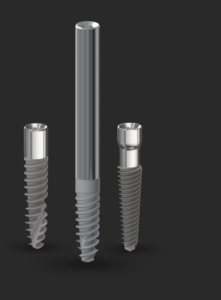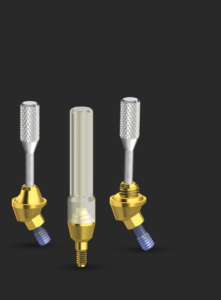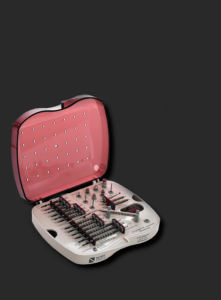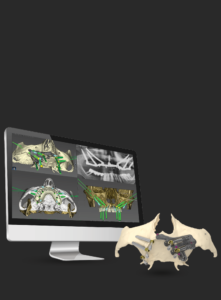Everything you need to know about Zygomatic treatment
The treatment with zygomatic implants is an advanced procedure.
We have here a list of frequently asked questions about zygomatic implants to help you better understand this treatment modality.
Are zygomatic implants a solution for me?
Edit Content
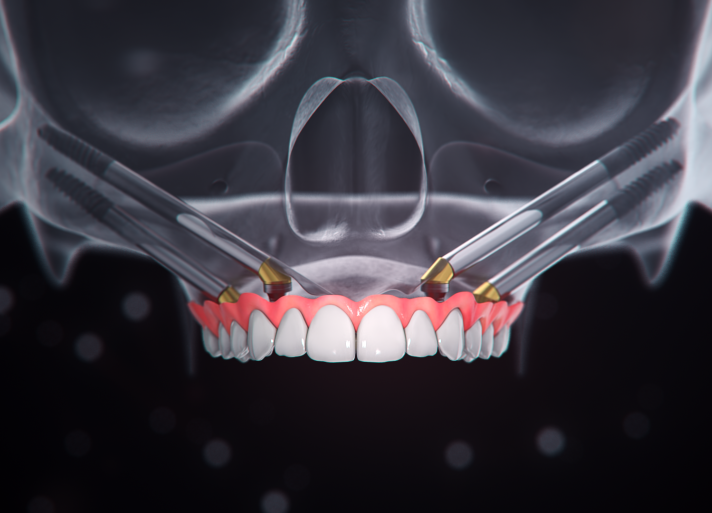
In certain situations, the bone of the upper jaw can shrink and become significantly smaller to the point that it can sometimes disappear. This phenomenon is called bone loss and is clinically referred to as “maxillary atrophy”. When this happens, the bone separating the sinus area from the mouth is very thin, only a few millimeters thick. This bone loss has the potential to prevent dental implant placement. Bone loss in the upper jaw can occur due to many reasons including dental infection, gum disease, and systemic diseases of the body. Only a thorough diagnostic by a trained team of experts can identify the causes of such bone loss. Additionally, implant loss or infection can lead to bone loss. As a result, the little bone left excludes the placement of additional or replacement dental implants. Maxillary atrophy may originate from systemic disorders too.
Maxillary atrophy has significant consequences on the quality of life for the patients. Due to the severe bone loss in the upper jaw, dentures often fit poorly and require adhesives to remain secure. Biting an apple, eating a sandwich, or simply smiling often becomes difficult, if not impossible, when patients with severe bone loss wear dentures. To make matters worse, the longer a patient wears a denture, the more bone they continue to lose in the jaw. This makes the denture fit even worse and the cycle continues to spiral out of control.
Edit Content

Patients reach out to their dentist with different medical complaints, ranging from a progressive loss of quality of life to the desire to eat, bite, and laugh like before. Patients, in many cases, have suffered from a complex dental history, including, on occasion, previous loss of routine implants. Zygomatic implants are a predictable solution for having an implant- supported fixed prosthesis when little to no bone is available.
The treatment with zygomatic implants is a life-changing solution. In many cases, fixed teeth can be delivered in as little as same day as the surgical procedure, allowing patients to regain their hope, confidence, and smiles. This approach is an advanced procedure that only trained and experienced dental surgeons can perform.
What to do when bone loss prevents dental implant placement?
Solutions when bone loss prevents dental implant placement
When patients have significant bone loss in the upper jaw, many dentists often say that there is no hope for placement of dental implants or that highly invasive and expensive bone grafting is required. Even with heroic efforts such as taking bone from the hip, these bone grafting procedures only produced dental implant success around 80%. Fortunately, modern treatment with zygomatic implants has achieved success rates exceeding 95%. The treatment involves using the strong and highly stable cheekbone, or zygomatic bone, to anchor implants and place fixed teeth within 24 hours. A new set of strongly secured implant supported teeth in just one day, Zygomatic implants make this possible!
With older techniques such as highly invasive bone grafting, patients may have to wait anywhere from 6-12 months for healing to occur and are often forbidden from wearing their denture during this process. Furthermore, published studies show that the strength of these bone grafts pale in comparison to that of the zygomatic cheekbone. Zygomatic implants are the safest option in this case. The patient receives fixed teeth in a day, in opposition to bone grafting, where a few months are necessary. With zygomatic implant treatment, patients can bite apples, eat a sandwich, and smile with confidence.
What is the next step?
Diagnostic testing
Having understood each patient’s complaints and history, the clinical diagnostic for zygomatic implants starts with a thorough oral examination. This is a visual observation of all areas of the mouth, teeth, gum, and structures around them. These tests are not invasive and do not require anesthesia.
To assess the possibility for placing dental implants, x-rays and CAT Scan imaging are used. These non-invasive radiological tests allow visualization of the bones, nerves, sinuses, and other anatomic features involved with dental implant treatment. If severe bone loss of the upper jaw is noted, zygomatic implants offer a safe and predictable solution.
Depending on each patient’s unique physical history,
additional tests and/or consultations with medical
providers may be required.
Employing a comprehensive approach to treatment increases patient safety and ensures the best chance of success for dental treatment involving zygomatic implants.
The difference between zygomatic and regular dental implants
Zygomatic implants are longer than regular dental implants. They can measure up to 60mm, which is the length required to anchor them in the cheekbone and reach the upper front teeth position to sustain the fixed prosthesis (if necessary). Conventional implants are typically limited to lengths of 16mm or less. Zygomatic and regular dental implants possess numerous characteristics in common, such as excellent biocompatibility, and high strength. Both are made from the same materials and have similar design features for anchoring into bone and securing dental prosthetics. Since their introduction in 1987, zygomatic implants have provided over 35 years of safe and reliable service.
Regular dental implants allow for different treatment plans depending on each patient’s requirement: single teeth replacement, bridges on implants, or full denture. Zygomatic implants represent the only solution for full mouth rehabilitation when severe bone loss is present. While some treatment plans for atrophic upper jaws may require extensive bone grafting and 8-10 conventional implants, use of zygomatic implants requires no bone grafting and as little as 4 implants. The reduced number of implants needed with zygomatic treatment results from the extreme strength and stability of the cheekbones.
Zygomatic implants often represent the last resort for implant supported teeth in patients with severe bone loss. Hundreds of studies over the past three decades have confirmed this treatment to be safe, predictable, and reliable. Countless numbers of patients who were told that dental implants were not an option have been restored back to normal dental function with zygomatic implants.
Zygomatic implant treatment is widely considered to be among the most advanced of all treatments in dentistry.
As such, this treatment should only be performed by
highly trained clinicians who have experience with zygomatic implants.
Noris Medical has been a leading provider of zygomatic implants for years and is proud to work with many of the world’s top zygomatic implant clinicians.
Having understood each patient’s complaints and history, the clinical diagnostic for zygomatic implants starts with a thorough oral examination. This is a visual observation of all areas of the mouth, teeth, gum, and structures around them. These tests are not invasive and do not require anesthesia.
To assess the possibility for placing dental implants, x-rays and CAT Scan imaging are used. These non-invasive radiological tests allow visualization of the bones, nerves, sinuses, and other anatomic features involved with dental implant treatment. If severe bone loss of the upper jaw is noted, zygomatic implants offer a safe and predictable solution.
Depending on each patient’s unique physical history,
additional tests and/or consultations with medical
providers may be required.
Employing a comprehensive approach to treatment increases patient safety and ensures the best chance of success for dental treatment involving zygomatic implants.
Zygomatic implants anchor into the cheekbone,
Will they affect my face structure? How so?
Patients that need zygomatic implants often have collapsed facial features due to the severe amount of bone loss in their face. With prosthetics supported by zygomatic implants, support is restored to the face often resulting in a more youthful appearance.
How does it compare to regular implant procedures?
No. Multiple published studies and patient surveys document that zygomatic implant treatment has similar post-surgical recovery compared to full mouth procedures with standard dental implants.


